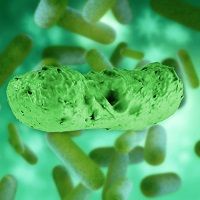Article
New Antiviral Combos Promise Ribavirin-Free HCV Regimens
Author(s):
New combinations of direct-acting antivirals (DAAs) may point the way to hepatitis C virus (HCV) cures without ribavirin (RBV) for some patients.

New combinations of direct-acting antivirals (DAAs) may point the way to hepatitis C virus (HCV) cures without ribavirin (RBV) for some, said Gregory Everson, MD, Professor of Medicine and Director of Hepatology, University of Colorado-Denver. He reviewed recent and breaking clinical trials using DAA combinations to a packed audience on November 10 at The Liver Meeting in Boston, MA.
Everson first clarified that none of the regimens discussed in the morning’s talk are yet FDA approved; though some are under review by the FDA, there have not yet been regulatory recommendations regarding RBV-free DAA regimens for HCV infection.
The targets of DAA therapies are the three enzymes required for replication of hepatitis C virus (HCV). Protease inhibitors (ABT450, for example), NS5A inhibitors (here, ombitasvir), and the nucleoside and non-nucleoside NS5B inhibitors all act on different enzymatic pathways to disrupt viral replication. Non-nucleoside protease inhibitors such as dasabuvir, Everson explained, have less potency against the virus, but “they seem to augment other regimens to increase the total antiviral effect.”
The SAPPHIRE I trial examined the use of combination DAA therapy in the treatment naïve GT 1 population, while SAPPHIRE II looked at treatment for those who were treatment experienced with HCV GT 1. The trials included both cirrhotic and noncirrhotic patients, and all patients received RBV in all arms. Both groups received 12 weeks of treatment with ABT-450/r-ombitasvir and dasabuvir. The overall sustained virologist response 12 weeks post-treatment (SVR12) was 96.2 percent
In the SAPPHIRE II treatment experienced cohort, 49 percent had been previous null responders to pegylated interferon + RBV. However, individuals who had previously failed triple therapy including a protease inhibitor were excluded from this trial, because one of the study drugs, ABT 450, is a protease inhibitor, so potential existed for cross-resistance. In SAPPHIRE II, overall SVR12 was 96.3 percent.
Summing up subanalyses from SAPPHIRE, Everson said, “Of the traditional variables that have been associated with poor response in the interferon era of treatment, such as African American or Latino ethnicity, age, viral load, gender — none of these seem to impact treatment in a consistent fashion.”
The question then arises, Everson continued, whether ribavirin is needed to achieve high SVR and a durable response. The PEARL II, III, and IV studies examined ribavirin-free regimens in individuals with HCV GT 1, who received ABT-450/ritonavir/ombitasvir and dasabuvir with and without ribavirin. The studies included both treatment-experienced and treatment-naïve patients without cirrhosis. PEARL data showed 98+ percent SVR12 rates whether RBV was a part of the regimen or not, except for GT 1a participants. In subanalysis, it became clearer that RBV is probably required for optimal treatment of individuals without cirrhosis and the HCV 1a GT.
TURQOISE II went on to examine individuals with HCV GT1 and compensated cirrhosis receiving 12 or 24 weeks of the same DAA combo as in the PEARL studies. However, this study focused primarily on cirrhotic patients who were treatment experienced. Overall SVR12 was 91.8 percent at 12 weeks, and 95.9 percent at 24 weeks. In this group, prior null responders benefited most from extending therapy from 12 to 24 weeks.
C-WORTHY is a newer study examining DAA regimens with and without RBV for individuals co-infected with HCV and HIV. The results, reported in full during another presentation at this conference, show that in general the data in coinfected patients mirrors results seen in HCV monoinfected patients.
Wrapping up the discussion of DAA combination therapy, Everson touched on the importance of considering the whole patient when managing drug-drug interactions; many patients are taking medications and supplements for non-hepatic conditions. Having a clinical pharmacist on the management team, he said, is critical to safe prescribing.
Finally, in discussing the cost of newer therapies, Everson made note of the significant personal and economic burden of untreated HCV and of unsuccessful treatment. In 2011 in the US, the cost of one liver transplant, he noted, was estimated to be over $570,000. Emerging regimes give real hope for a hepatitis cure for those intolerant to older regimens and for those who had failed earlier treatments.
2 Commerce Drive
Cranbury, NJ 08512
All rights reserved.




